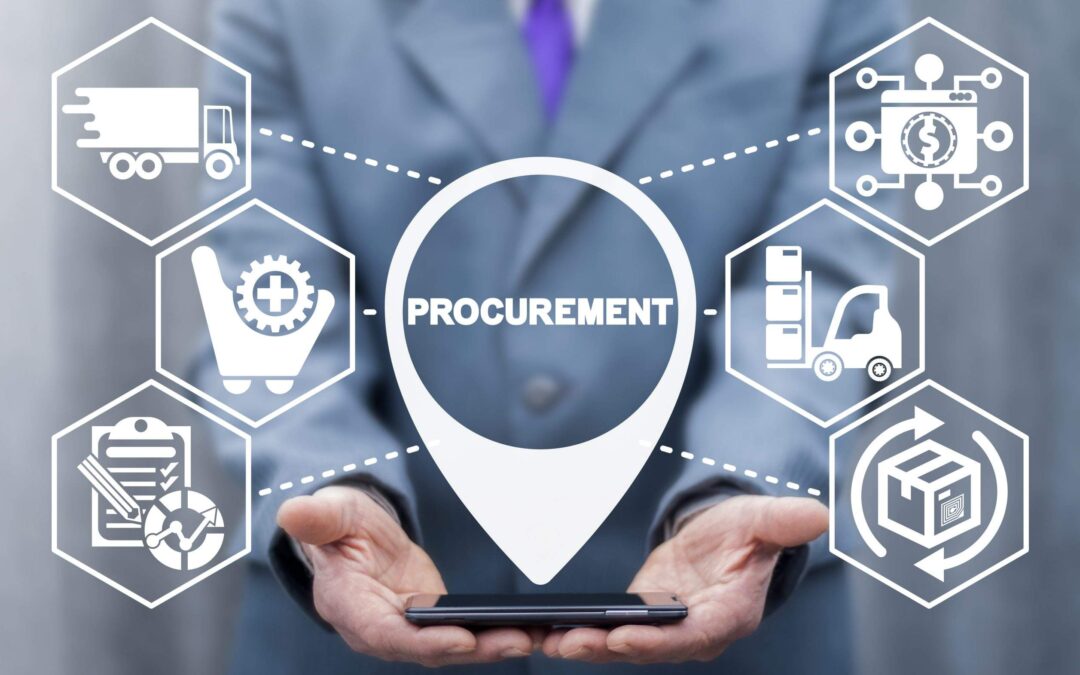
by Sophia Riley | Oct 29, 2025 | AP Automation
In an increasingly globalized economy, the structure of modern enterprises is growing more complex. Multinational organizations routinely operate across multiple entities, geographies, and currencies—generating an intricate web of intercompany transactions that must be managed, reconciled, and reported with precision.
For finance teams, this complexity introduces both operational and regulatory challenges. Manual processes, fragmented systems, and siloed data create bottlenecks that slow close cycles, increase compliance risks, and strain internal controls. To remain agile and audit-ready, CFOs are turning to intercompany accounting automation as a strategic lever.
The Rising Complexity of Global Entity Management
Organizations with international or multi-entity footprints face several recurring pain points:
- Volume of transactions: Intra-group billings for shared services, royalties, cost allocations, and inventory transfers can number in the thousands each month.
- Currency mismatches: Exchange rate fluctuations require consistent FX remeasurement and adjustments.
- Regulatory scrutiny: Tax authorities and auditors increasingly demand transparency around transfer pricing and intercompany settlements.
- Decentralized processes: Different ERP instances, localized workflows, and varying compliance standards contribute to inconsistent practices and fragmented oversight.
In this environment, reliance on spreadsheets and manual journal entries is no longer tenable.
The Strategic Role of Intercompany Automation
Intercompany accounting automation helps finance teams streamline and standardize the creation, matching, elimination, and reporting of transactions. These systems often include:
- Automated matching of intercompany payables and receivables
- Standardized rules engines for allocations and eliminations
- Audit trails that capture changes and approvals at every step
- Real-time exception handling to flag discrepancies before close
- Integrated FX handling to manage currency translation consistently
This level of automation doesn’t just improve speed—it enhances data integrity, compliance readiness, and cross-entity coordination.
Benefits at Scale: Why CFOs Are Prioritizing It
Finance leaders are no longer treating intercompany processes as a back-office burden. Instead, they’re recognizing the strategic benefits of automation, especially across large, distributed organizations:
1. Accelerated Close Cycles
Manual reconciliations across dozens of entities can delay the close by days or even weeks. Automation enables faster intercompany matching and elimination, allowing teams to close the books faster—and with fewer last-minute adjustments.
2. Stronger Internal Controls
Automated approval workflows and audit logs ensure that intercompany transactions comply with internal policies and external regulations. This reduces the risk of errors and supports compliance with Sarbanes-Oxley (SOX).
3. Improved Global Visibility
With centralized dashboards and real-time reporting, finance teams can gain a consolidated view of intercompany balances, outstanding disputes, and settlement timelines—across all entities and geographies.
4. Reduced Tax and Transfer Pricing Risk
Automated documentation and consistent application of transfer pricing rules improve defensibility with tax authorities and reduce the risk of costly penalties during audits.
5. Scalability with Growth
As organizations expand through M&A or expand their global footprint, manual processes break down. Automation allows finance teams to scale operations without adding headcount or sacrificing accuracy.
A Foundation for Consolidation and Compliance
Intercompany automation is also a critical enabler of faster financial consolidation. By ensuring clean intercompany eliminations and consistent treatment of transactions, it simplifies the path toward a single version of truth for both management and statutory reporting.
It also reduces exposure during external audits, where inconsistencies in intercompany records can raise red flags and delay certification. When paired with broader finance automation initiatives (such as close automation or ESG data integration), it forms a pillar of digital transformation.
Technology Considerations for Implementation
When evaluating intercompany automation tools or enhancements, CFOs and IT leaders should consider:
- ERP integration: Does the solution support your current and future ERP environment across all entities?
- Configurability: Can workflows, rules, and approval chains be tailored to reflect organizational policies?
- Multi-currency support: Is currency remeasurement and consolidation built in?
- Reconciliation and analytics: Are exception reports and dashboards available in real-time?
- Scalability and governance: Will the platform grow with your organization and maintain control across new entities?
The goal isn’t just automation—it’s sustainable automation that supports long-term resilience.
Final Thoughts: A Strategic Imperative for Global Finance
As global operations become more interconnected, so do the financial processes that support them. Intercompany accounting is no longer a background function—it’s a strategic enabler of agility, control, and compliance.
By automating the intercompany lifecycle, finance leaders can reduce friction, improve oversight, and unlock new efficiencies across the enterprise. It’s not just about faster closes or cleaner audits—it’s about building a finance infrastructure that’s fit for scale.
oAppsNET helps forward-looking CFOs modernize finance processes through targeted digital transformation. Learn how we support intercompany automation and multi-entity optimization at the enterprise level.

by Sophia Riley | Oct 22, 2025 | CFO, Artificial Intelligence
Enterprise finance teams process millions in vendor payments, expense reports, purchase orders, and invoices—but how often does that data become actionable insight?
Traditionally, spend analysis has been reactive, triggered by audits or cost-cutting mandates. However, in a business environment where volatility, supplier risk, and operational agility are at the forefront of boardroom discussions, proactive spend intelligence has emerged as a pivotal tool for strategic control.
Today’s CFOs are not just using intelligent spend analysis to curb leakage, but also to shape planning, enforce policy, and enhance procurement’s alignment with finance. This new approach, powered by AI, automation, and unified data models, is transforming spend management from a back-office compliance task to a forward-looking strategy.
What Is Intelligent Spend Analysis?
Intelligent spend analysis refers to the use of automated tools, enriched data, and predictive analytics to gain real-time, enterprise-wide visibility into where money is going—and why.
Key elements include:
- Data consolidation across AP, procurement, T&E, and contract management systems
- Classification and enrichment of unstructured and siloed data
- AI-powered pattern recognition to detect anomalies, duplicate payments, or maverick spend
- Dashboards and forecasting models for proactive budget control and scenario planning
This is a significant leap from traditional spend reporting, which often relied on fragmented spreadsheets, manual reconciliation, and lagging indicators.
Why It Matters for CFOs
Intelligent spend analysis equips finance leaders to:
- Uncover Hidden Spend Risks
- Rogue purchases, off-contract buying, and duplicate vendor setups can erode margins silently. AI tools identify these patterns in real time, allowing timely intervention.
- Enhance Budget Accuracy
- Granular transaction data, when structured and visualized, supports more accurate cash flow modeling and budget forecasts—especially across variable or discretionary categories.
- Support ESG and DEI Goals
- Visibility into supplier attributes (e.g., carbon impact, diversity certifications) enables finance to align spend with enterprise sustainability and inclusion metrics.
- Improve Supplier Performance
- Integrated spend-performance analysis helps teams evaluate vendor reliability, cost-effectiveness, and compliance—informing smarter sourcing decisions.
- Enable Procurement-Finance Alignment
Unified views of negotiated vs. actual spend, contract compliance, and rebate tracking foster tighter control across procurement and finance operations.
Automation as the Enabler
Automation underpins the entire intelligent spend lifecycle:
- Data ingestion bots pull information from ERPs, procurement platforms, card feeds, and spreadsheets
- Machine learning models clean, classify, and categorize spending data using natural language and contextual cues
- AI-based alerts flag policy violations, potential fraud, or unusual spikes in spend
- Interactive dashboards give stakeholders immediate, role-specific visibility into key metrics
The result? Finance teams spend less time building reports and more time acting on insight.
Barriers to Adoption—and How to Overcome Them
While the benefits are clear, many organizations face obstacles in adopting intelligent spend analysis, including:
- Data fragmentation across legacy systems
- Inconsistent taxonomies for vendor and category classification
- Change management fatigue across finance and procurement teams
- Lack of a centralized strategy to align goals across departments
Solutions include:
- Prioritizing spend visibility initiatives in digital finance roadmaps
- Investing in data normalization tools or third-party enrichment providers
- Creating joint KPIs between procurement, AP, and FP&A
- Starting with pilot use cases (e.g., tail spend, duplicate vendor detection) to demonstrate quick wins
The Role of Finance in Enterprise Spend Intelligence
As transactional finance becomes increasingly automated, CFOs are being asked to step beyond compliance and lead insight generation across the enterprise. Spend analysis is an ideal proving ground.
By treating spend data as a strategic asset—not just a record of past decisions—finance leaders can improve resilience, optimize working capital, and steer investment toward the highest-value areas.
Whether it’s spotting supplier risk early, surfacing opportunities for consolidation, or improving forecast precision, intelligent spend analysis makes it possible.
Strategic Spend, Strategic Finance
Finance transformation is no longer just about speed or efficiency—it’s about strategic control. Intelligent spend analysis helps CFOs achieve their goals by unlocking the value of data already flowing through the organization.
With the right tools and frameworks in place, oAppsNET clients can empower their finance and procurement teams to work smarter, faster, and with greater foresight. Reach out to us today to get started.

by Sophia Riley | Oct 16, 2025 | Artificial Intelligence, ERP
In an era defined by volatility, the ability to adapt quickly is no longer a competitive edge—it’s a business imperative. For CFOs, that means evolving beyond static planning models and embracing scenario planning as a core capability. But as macroeconomic swings, geopolitical shocks, and supply chain instability become the new norm, traditional planning tools can’t keep up.
Enter AI-enhanced scenario planning. By augmenting forecasting with machine learning, real-time data integration, and probabilistic modeling, finance leaders can better anticipate what’s next—and act before disruptions erode margins, liquidity, or market share.
Why Traditional Scenario Planning Falls Short
Historically, scenario planning has relied on static models built in spreadsheets. These plans are often limited to best-, base-, and worst-case outlooks that fail to reflect the complexity or speed of modern market shifts. They are time-consuming to build, challenging to maintain, and quickly become outdated.
Limitations include:
- Lagging data inputs that fail to reflect real-time operational or external changes.
- Manual modeling makes it difficult to test multiple variables or contingencies simultaneously.
- Siloed ownership within finance, limiting cross-functional insight and agility.
- Low confidence levels from stakeholders due to a lack of transparency or scenario robustness.
As a result, many organizations fall into reactive mode—adjusting strategy only after risk materializes, rather than proactively mitigating it.
The Role of AI in Modern Scenario Planning
Artificial intelligence transforms the scenario planning process from a static exercise into a dynamic, continuous capability. Here’s how:
1. Real-Time Data Ingestion
AI systems can pull live data from across the enterprise—ERP systems, sales pipelines, supply chain dashboards, customer behavior metrics, macroeconomic feeds—and integrate them into planning models. This ensures that scenarios are based on up-to-date inputs rather than lagging historical assumptions.
2. Multi-Variable Forecasting
Unlike traditional models that test a few isolated variables, AI can simulate the interplay between dozens of internal and external drivers at once. For example:
- What happens if raw material costs rise 15% while demand simultaneously softens?
- How would different inflation rates or currency fluctuations affect working capital?
AI-driven scenario engines can model cascading effects with far greater precision, helping CFOs explore a wide range of “what ifs.”
3. Continuous Recalibration
Machine learning algorithms improve over time by ingesting new data and outcomes. This creates a living model that evolves as market conditions change, rather than requiring manual rebuilding each quarter.
4. Prescriptive Insights
AI doesn’t just show you what might happen—it can recommend what to do. By analyzing historical outcomes and decision impacts, AI tools can suggest optimal responses to different scenarios, from adjusting pricing strategies to reallocating capital or shifting supplier portfolios.
Benefits for CFOs and Finance Leaders
AI-enhanced scenario planning delivers more than risk mitigation. It enables the finance function to play a strategic leadership role across the enterprise.
Greater Agility
With AI-driven tools, finance can generate and test new scenarios in hours—not weeks. This responsiveness allows organizations to pivot faster when disruptions arise.
Stronger Alignment
Scenario outputs can be shared with operations, supply chain, and commercial teams in real time, creating a unified playbook for navigating uncertainty.
Improved Capital Allocation
By quantifying risk exposure and opportunity under different scenarios, finance leaders can guide smarter decisions on investment, hiring, inventory, and liquidity buffers.
Increased Confidence
With transparent assumptions and real-time updates, board members and stakeholders gain greater trust in the planning process—critical for managing investor expectations and regulatory scrutiny.
Building the Right Infrastructure for Scenario Planning 2.0
To realize the full potential of AI in scenario planning, organizations need a robust digital foundation. Key enablers include:
- Cloud-Based Finance Systems: Ensure data accessibility, integration, and scalability across functions.
- Data Governance Frameworks: Maintain clean, consistent, and trusted inputs across all planning dimensions.
- Cross-Functional Collaboration: Finance, IT, operations, and business units must align on data definitions, planning assumptions, and decision frameworks.
- User-Friendly Interfaces: Scenario tools should empower analysts and business leaders—not just data scientists—to model scenarios and extract insights.
How oAppsNET Aligns with the Vision
At oAppsNET, we understand that resilient finance transformation hinges on more innovative planning—not just faster processing. While we don’t claim to offer a “magic button” for disruption-proof forecasting, we do believe that AI-enabled finance solutions and intelligent integrations lay the groundwork for more adaptive scenario modeling. Our mission is to help finance leaders transition from reactive problem-solvers to proactive strategists equipped for whatever comes next.
Looking Ahead: From Planning to Preparedness
Disruption is not a question of “if,” but “when.” The organizations that emerge stronger from future shocks won’t be the ones who forecast correctly—they’ll be the ones who modeled multiple futures, prepared targeted responses, and moved quickly.
With AI-enhanced scenario planning, CFOs gain more than foresight. They gain the confidence to act with clarity, even when the path ahead is uncertain.
Ready to evolve your scenario planning strategy? Contact oAppsNET to explore how intelligent finance automation and AI-driven capabilities can help your organization plan smarter—and navigate volatility with precision.

by Sophia Riley | Oct 14, 2025 | CFO, Business Management
With ESG pressures escalating across regulatory, investor, and stakeholder realms, finance leaders are thrust into the forefront of sustainability reporting. The transition from scattered disclosures to actionable insights is not a future goal, but an urgent necessity. To achieve this, CFOs require more than just spreadsheets and static dashboards—they need a robust data foundation.
This shift requires more than simply tracking emissions or diversity metrics. It calls for integrating sustainability into the core of financial operations, with clearly defined KPIs, audit-ready processes, and interoperable digital systems. In short, ESG must be treated as a fundamental extension of financial data governance.
Why ESG Metrics Now Fall Under Finance
Historically, environmental and social reporting has been the domain of sustainability teams or external consultants. But with evolving mandates like the EU’s CSRD, SEC climate disclosure rules, and investor calls for transparency, ESG metrics are becoming core to financial disclosures.
Finance teams are not only uniquely positioned but also inspired to bring rigor, process discipline, and data credibility to ESG, ensuring disclosures are both compliant and decision-useful. Their leadership in this area is not just a responsibility, but a source of motivation and inspiration.
Key drivers pushing ESG into finance’s domain:
- Regulatory expansion: ESG disclosures are shifting from voluntary to mandatory, especially in carbon accounting and supply chain sustainability.
- Investor scrutiny: Institutional investors are integrating ESG into capital allocation models and demanding standardized, verifiable data.
- Operational impact: ESG performance increasingly affects credit ratings, procurement eligibility, and brand equity.
Challenges in ESG Data Collection and Reporting
Despite growing urgency, most organizations struggle with ESG data accuracy, consistency, and traceability. Some of the most common issues include:
- Data silos across departments (HR, procurement, facilities, etc.)
- Inconsistent definitions for metrics like Scope 3 emissions or board diversity
- Manual processes for aggregating, validating, and reporting sustainability data
- Limited auditability of ESG figures presented to regulators or investors
Without structured systems, ESG reporting is reactive and burdensome—often resulting in missed opportunities or compliance risks.
Laying the Data Foundation: A Finance-Led Approach
To overcome these obstacles, CFOs are applying traditional financial control principles to sustainability data. That means:
- Standardizing ESG KPIs across the enterprise
- Establishing ownership of ESG data collection and validation processes
- Embedding ESG into ERP systems, procurement platforms, and finance workflows
- Leveraging automation to streamline data collection and maintain version control
Much like SOX compliance required rigor in financial reporting, ESG compliance demands systematic controls, transparency, and traceability—finance is already equipped to lead this charge.
What Sustainability Metrics Matter Most?
There is no one-size-fits-all ESG dashboard, but specific metrics are becoming common across sectors. CFOs should prioritize metrics that:
- Align with materiality (sector-specific impact and stakeholder expectations)
- Link to enterprise value (e.g., resource efficiency, employee retention, reputational risk)
- Can be reliably sourced and verified
Examples of widely used sustainability metrics include:
- Environmental: Scope 1–3 carbon emissions, water usage, waste diversion, energy intensity
- Social: Workforce diversity, pay equity, health and safety incidents, community impact
- Governance: Board diversity, executive compensation alignment, whistleblower policy adherence, anti-corruption metrics
These metrics can be embedded into financial dashboards alongside traditional indicators such as cash flow, EBITDA, or working capital.
The Role of Automation and Integration
Leading finance teams are turning to finance automation platforms, cloud ERPs, and data orchestration tools to eliminate the friction of ESG reporting. Core benefits include:
- Real-time data ingestion from operational systems (e.g., facilities, HR, procurement)
- Audit trails for ESG inputs and assumptions
- Automated reporting mapped to regulatory frameworks (e.g., GRI, SASB, TCFD)
- Workflow automation for data collection, approval, and issue resolution
In high-maturity organizations, ESG data can be used not only for reporting but for modeling risk scenarios, guiding capital allocation, or optimizing supply chain resilience.
Aligning ESG and Financial Strategy
A growing number of CFOs are aligning ESG goals with long-term financial planning and performance metrics. Examples include:
- Embedding sustainability-linked KPIs in executive compensation plans
- Tying ESG targets to the cost of capital or credit lines
- Including ESG risk scenarios in enterprise risk management (ERM) frameworks
- Identifying ESG-driven operational efficiencies (e.g., energy savings, waste reduction)
This strategic alignment elevates ESG from a compliance obligation to a driver of enterprise value, giving finance leaders a more explicit mandate and more vigorous ROI justification for ESG investments.
Getting Started: Practical First Steps
To begin building a strong ESG data foundation, CFOs should: Convene a cross-functional ESG working group that includes finance, sustainability, IT, and operations. This step-by-step guide provides a clear roadmap for integrating ESG metrics, making the audience feel guided and supported.
To begin building a strong ESG data foundation, CFOs should:
- Convene a cross-functional ESG working group that includes finance, sustainability, IT, and operations.
- Inventory current ESG data sources and reporting obligations (regulatory, investor, internal).
- Define standardized ESG KPIs that reflect material risks and value creation opportunities.
- Integrate ESG metrics into finance systems wherever possible.
- Invest in automation and auditability to prepare for evolving regulations.
Moving Forward with Confidence
Sustainability is no longer a siloed initiative—it’s a core part of financial governance. By embedding ESG metrics into the data fabric of the enterprise, CFOs can unlock transparency, ensure compliance, and drive long-term value creation.
oAppsNET helps finance leaders modernize data processes with intelligent automation, ERP integration, and ESG-aligned transformation strategies. Let us help you today.

by Sophia Riley | Oct 9, 2025 | Accounts Payable, Automation
Finance leaders have long focused on automating accounts payable (AP) and accounts receivable (AR) as independent functions—aiming to reduce manual workload, improve accuracy, and accelerate cash flow. But the full potential of finance transformation lies beyond these silos. Actual operational efficiency and financial visibility come from automating the entire procure-to-pay (P2P) lifecycle, from strategic sourcing and vendor onboarding to invoice reconciliation and payment execution.
Today’s CFOs are looking beyond departmental automation. They’re building integrated, intelligent P2P ecosystems that drive agility, improve working capital management, and reduce enterprise-wide risk. This shift reflects a growing recognition that P2P automation is not just a back-office concern—it’s a critical enabler of business performance.
What Is Procure-to-Pay (P2P) and Why It Matters
The procure-to-pay lifecycle encompasses every activity related to purchasing and paying for goods and services within an organization. A typical P2P workflow includes:
- Sourcing and vendor selection
- Purchase requisition and order generation
- Goods receipt and three-way matching
- Invoice processing and validation
- Payment execution
- Spend analytics and vendor performance review
Each of these steps involves multiple teams—procurement, finance, operations—and a maze of systems and stakeholders. When fragmented or manually coordinated, P2P becomes slow, opaque, and prone to errors. Costs increase, supplier trust erodes, and strategic insights are lost in spreadsheets.
Conversely, automating the P2P lifecycle improves not only operational speed, but also cash forecasting, vendor risk management, and regulatory compliance—key areas of CFO accountability.
Key Drivers Behind End-to-End P2P Automation
1. Complexity of Vendor Ecosystems
Modern enterprises work with thousands of suppliers, each with unique terms, documentation requirements, and risk profiles. Manual coordination across procurement and finance leaves room for miscommunication, duplicate payments, and non-compliance.
Automated P2P systems provide centralized vendor onboarding, standardized contract terms, and real-time tracking—reducing friction and improving audit readiness.
2. Demand for Real-Time Visibility
CFOs need continuous insight into liabilities, commitments, and working capital exposure. Traditional P2P cycles offer delayed and incomplete data, forcing reactive decisions.
With automation, organizations gain real-time visibility into purchase order status, invoice queues, discount eligibility, and payment timing—empowering more intelligent forecasting and liquidity planning.
3. Pressure to Optimize Working Capital
Every delayed approval or lost early payment discount represents trapped value. CFOs increasingly view working capital as a performance lever—and P2P automation allows better control of payment terms, discount capture, and inventory alignment.
Tactical Areas of Automation Across the P2P Lifecycle
Let’s break down how automation can streamline each core phase:
1. Procurement and Sourcing
- Automated vendor onboarding with compliance checks and digital documentation
- E-sourcing platforms to compare quotes and drive competitive bidding
- Contract lifecycle management (CLM) integration for seamless execution
2. Purchase Requisition and PO Management
- Template-driven requisitions reduce maverick spend
- PO auto-generation tied to budget approvals and catalog pricing
- Approval workflows routed by role, spend level, and category
3. Goods Receipt and Matching
- 3-way match automation (PO, invoice, goods receipt) for faster validation
- Exception handling queues with AI-based suggestions for resolution
- Real-time status dashboards to reduce cycle times and chase emails
4. Invoice Processing
- Invoice ingestion via OCR or EDI with duplicate detection
- Automated coding and GL assignment using machine learning
- Dynamic discounting logic based on cash position and terms
5. Payment Execution
- Payment run automation across ACH, wire, virtual card, and check
- Fraud detection rulesets are built into the payment approval process
- Bank reconciliation integration provides real-time cash positioning, which refers to the ability to instantly view the company’s current cash balance and forecast future cash flows, thereby enabling better cash management decisions
Strategic Benefits for Finance Leaders
Beyond the noticeable productivity gains, automating P2P unlocks several high-value outcomes aligned with CFO goals. This enhanced control over spend, audit readiness, and supplier relationships empowers finance leaders and positions them at the center of value creation:
Enhanced Spend Control
Digitized P2P processes create a single source of truth, enabling better analysis of vendor performance, category spend, and contract compliance.
Improved Audit and Compliance Readiness
Centralized records, version tracking, and embedded approval logs simplify internal audits and ensure adherence to internal controls and regulatory requirements.
Stronger Supplier Relationships
Faster invoice approvals and predictable payments reduce disputes and position the company as a preferred customer—helping secure better terms and reliable supply.
End-to-End Process Standardization
Automation enforces consistent processes across business units and geographies, reducing operational risk and making it easier to scale.
Common Barriers to P2P Automation—and How to Overcome Them
Despite the benefits, many enterprises remain stuck in fragmented or partially automated environments. Common blockers include:
- Siloed technology stacks that separate procurement, AP, and finance
- Resistance to change from teams accustomed to manual control
- Lack of real-time integration between ERP, procurement, and treasury platforms is a common barrier to P2P automation. Being aware of this and understanding its importance in the latest trends is crucial for successful automation
Overcoming these requires a modular, integration-ready automation strategy—not a rip-and-replace approach. oAppsNET encourages clients to build gradually, integrating new tools that leverage existing ERP data while standardizing workflows across departments.
Automating AP and AR is no longer enough. To achieve true finance transformation, CFOs must expand their scope to the entire procure-to-pay lifecycle. This shift from transactional to transformational finance is inspiring and forward-thinking.
By orchestrating procurement, finance, and operations through a unified, intelligent automation framework, enterprises gain speed, control, and strategic agility. P2P isn’t just about paying faster—it’s about empowering finance to lead from the center of value creation.
Ready to Reimagine Your P2P Strategy?
oAppsNET helps enterprises streamline and digitize finance workflows with Oracle-native tools designed to integrate procurement, AP, and beyond. Let’s discuss how to optimize your procure-to-pay lifecycle—start to finish.





